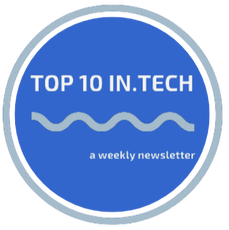|
1. SaaS METRIC OF THE WEEK: VALUE-BASED PRICING: Value-based pricing is a tough nut to crack as it makes the most of what the maximum cost customers would be willing to pay for a product or service - this means there is no magic guesswork or thumb-suck number. These prices need to be arrived at Empirically. Paddle.com has a good guide on what this means (with examples), and Paddle/Profitwell has a total guide on making it happen (and how to go about calculating/measuring it).
2. PRICING: This one is totally a follow-up to #1 above and is interesting as the author is pitching a new, better (gasp!) way to decide your product pricing. HINT: It's all about how you ask the question. And this variant on how to research and implement a value-based pricing model. 3. PRODUCT MARKET FIT: Oooof - another Startup-ism - More than 50% of the time, the lack of Product-Market Fit (PMF) factors into the reason a startup fails (keep reading this article, though as it goes through how StartupOS figured their PMF out). AirTree (an early-stage VC) has just published this article taking a look at what metrics VCs like them look at for signs of product-market fit, as well as what the red flags are. Also, this article has some great PMF definitions. PMF was called "the only thing that matters" to early-stage startups by Marc Andreessen 12 years ago. Now, his team gets more nuanced, suggesting focusing on product-user-fit as an indicator of achieving PMF. A similar nuance is also true post-PMF with repeatable-scalable revenue models as a precursor to a repeatable-scalable business model (you know - the one with actual profits). 4. OPEN SOURCE AI: Earlier this year, I posted a cool dashboard of the top open source projects by growth, retention, and usage. (It can be a little confusing, so here is a Substack article outlining the dashboard in more detail). This article is pitching why Open Source versions of AI models will win over the long term. 5. SALARY (Updated): Hey Founders, a TechCrunch article earlier this year recommended that founders pay themselves rather than doing it for the equity - after all, paying people is what Venture should be for, right? So the bigger question is how much? Unfortunately, this doesn't mean you get Market Rates. Startup founder's and CEO salaries can often range from zero to a gated raise based on ARR. See here for lots of good answers and also lots of different situations. Christoph Janz of Point Nine Capital has recently taken this a little further with a founder salary calculator based on European market research, so the amounts are in Euros. 6. TECHNOGRAPHIC: Add this doozy of a Portmanteau to your dictionaries and spell checker as it is the label for the Ponzi scheme of SaaS: How Many Technologies Can a Company Adopt at Once? Answer - there is always one more (JK, but not really). 7. GROWTH BENCHMARKS: Here are some excellent benchmarks for growth-stage startups from ICONIQ Capital (downloadable PDF). It is similar to the public market report I posted in last week's newsletter - topline performance reductions (ARR, NDR, etc.) Companies with less than $25M ARR should be shooting for 200%+ growth with $100K in ARR per employee! 8. PAYFAC: Crack open them Tech Dictionaries again: PayFac (or Payments Facilitator) is something I have implemented to create an additional (recurring) revenue line to the business, but it was only this week that I discovered a pre-existing portmanteau for that. Stripe has a good guide on bringing PayFac in-house, and here is a downloadable PDF on the same topic. Very low touch once it's up and running! 9. INTELLECTUAL PROPERTY (AI): Historically, in the Tech World, many startups have been vulnerable to their competitors producing copycat technologies - looking at you Meta/Facebook. Generative AI raises newer questions on intellectual property – who owns AI-generated content, and who benefits? This article from Benedict Evans delves into the complexities - looking at ownership, moral rights, and potential exploitation. 10. CASE STUDY: Many Startups discuss their early customer acquisition strategies. For the first 10, cold outreach, personal networks, and social media are key. By 100, word of mouth and platforms like Product Hunt/G2 gain momentum. Getting to 1,000, SEO, social media, and product dev take over. Many wish they'd explored untapped avenues sooner. POD OF THE WEEK: Complementing #1 and #2 above, in an episode of the SaaS Open Mic podcast from earlier this year, Marc Boscher, CEO and co-founder of Unito, discusses continuous pricing experimentation and strategies to ensure pricing migrations don't disrupt existing customers. Comments are closed.
|
|
